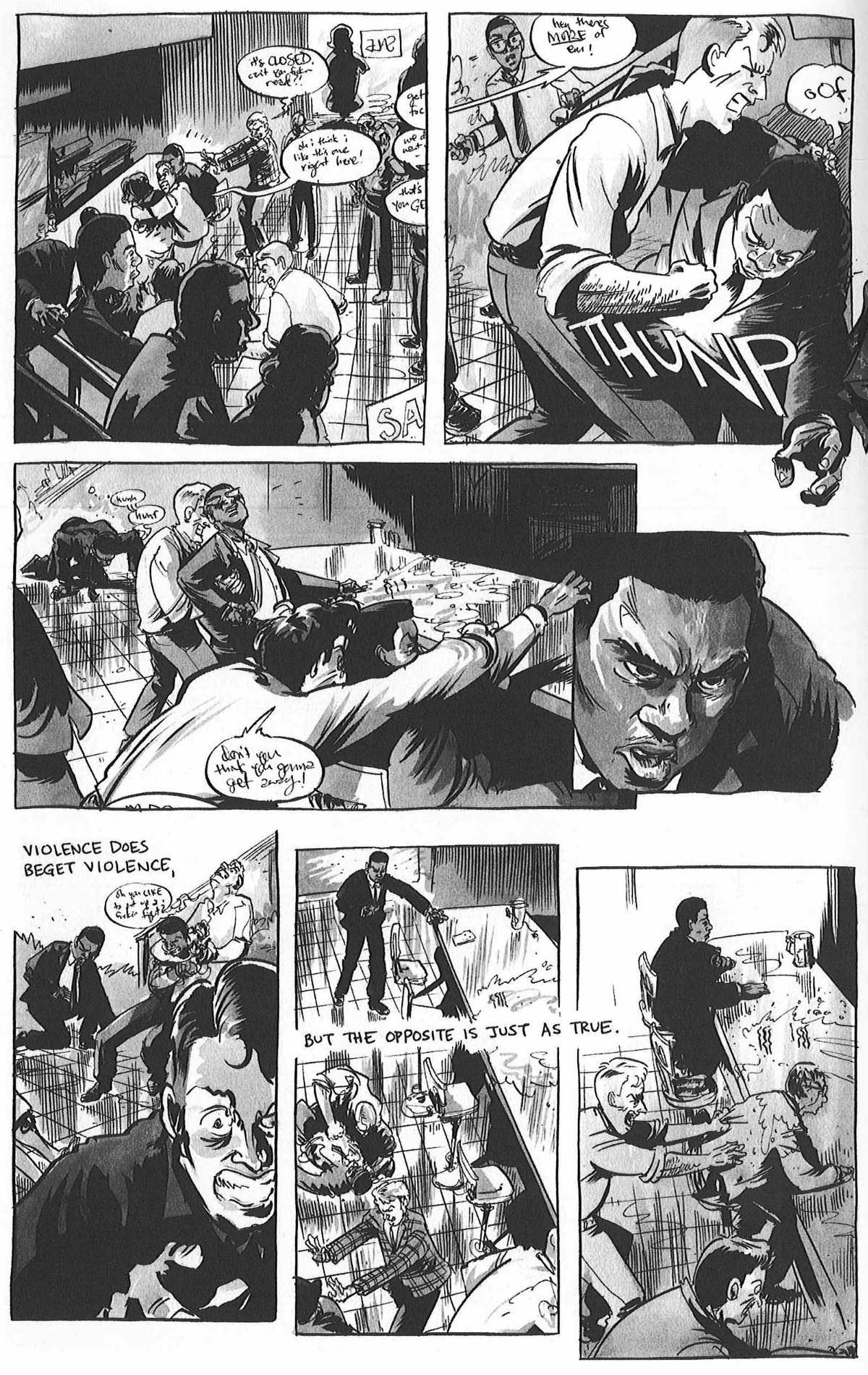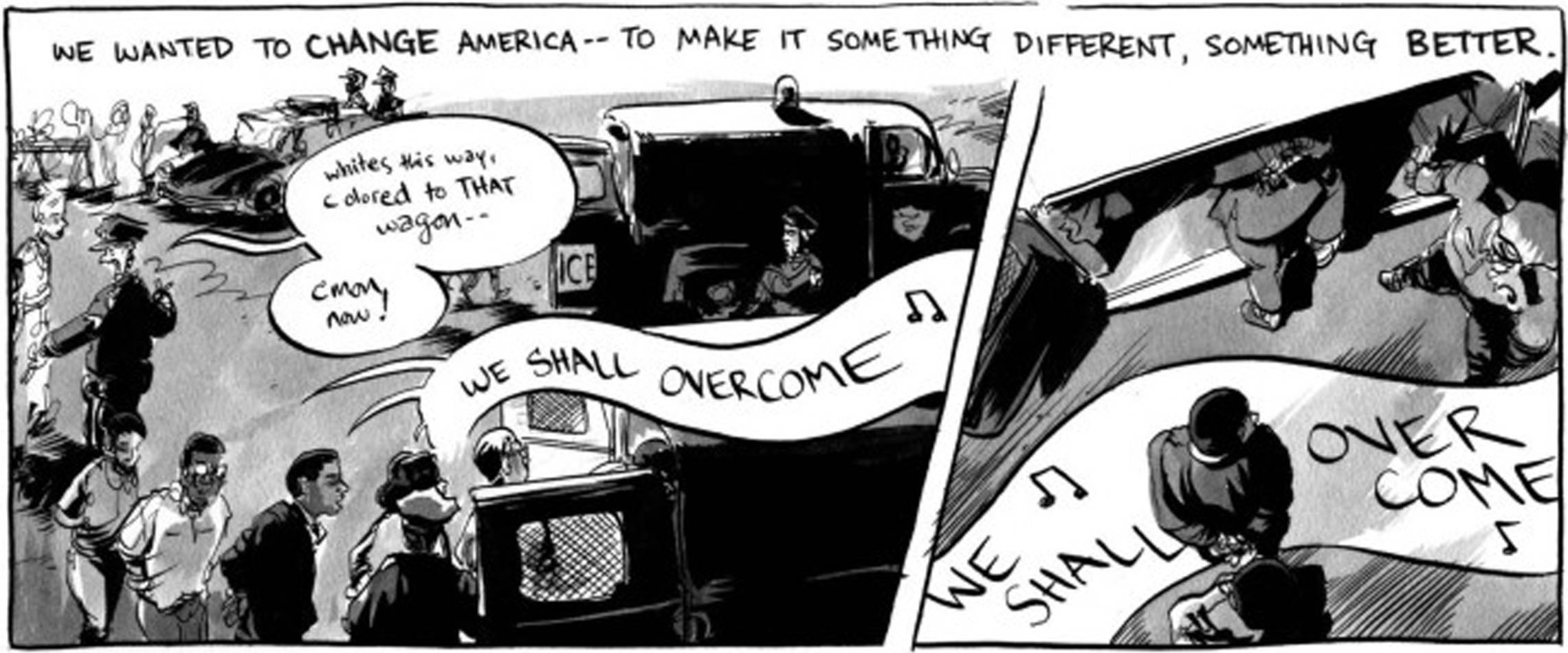
The best thing I read this year was March (2013) by Rep. John Lewis, Andrew Aydin, and Nate Powell. Inspired by the influential pulp comic Martin Luther King and the Montgomery Story (1957), Lewis wanted to make a comic book for the modern era that told the story of the Civil Rights Movement from its tumultuous beginnings to its culmination in the march from Selma to Montgomery.
This is the story of people getting their dignity. It’s a story I’ve heard time and time again, but I never experienced it like I did with this book. The visual form amplifies the impact of this story. It’s hard to put into words.
The most striking aspect of this book is that white people are the villain. Now I know white people are also the villains in Die Hard and Harry Potter but in this book it’s the white people who bombed churches. It’s the white people who spit on folks trying to eat. It’s the white people who threw bricks at grandmothers. It’s the white people who murdered Emmett Till. It’s white people who waited for the Freedom Riders at the bus station with clubs. It’s white people who twisted the law to strip the dignity of black Americans. And this is not fiction.
If you’re white, this can make you uncomfortable.
If you’re black, this is probably not news to you.
I don’t think Rep. Lewis set out to demonize white people, far from it, I think Lewis provides honest retelling of a decade of atrocities. A decade of struggle. This is the education I never got at school. Never was the utter cruelty perpetrated by white people conveyed in such a palpable way. Perhaps this is due in part to the graphic novel medium.
One of the most stirring visual elements in the novel is when white people yell racial slurs. Slurs are depicted as illegible scribbles. The crass scrawls let you feel the meaningless, vulgar, twisted, and grotesque words.

It’s impossible to read March without thinking of the current racial climate in America. From Black Lives Matter to the NFL protests. To the weakening of the Voting Rights Act. To the racial gerrymandering in Texas, South Carolina, and other states. To the Alabama Senate race where the choice is between a person who prosecuted the KKK members involved in the 16th Street Baptist Church bombing in Birmingham which murdered four young girls or… an alleged child predator. Or even LGBTQ discrimination disguised as religious freedom. You see history repeating itself.
You can hear echoes of every racist argument today. I found a clip from a 9-part PBS documentary of the Civil Rights Movement called “Keep Your Eyes on the Prize” where a well-meaning white woman from Nashville explains her thoughts on why businesses shouldn’t have to serve black people at the lunch counter.
This is quite painful to watch. She equates passive resistance to violence. You would hope we’d have moved forward from this.
The Civil Rights Movement was over 10 years of hard work, bloodshed, and civil disobedience. I never pieced together that timeline until this book. Year after year, protest after protest, sit-in after sit-in, arrest after arrest, beating after beating, bombing after bombing… for over 10 years.
I never realized how organized the Civil Rights Movement was until reading this book. The story in Book One about how the Nashville Student Movement would hold training sessions to see if people were able to withstand the abuse was eye-opening. If you broke your composure among peers, they asked you to not participate in the protest. There were rules and principles for maintaining the moral high ground. The movement was organized.
The bus boycotts, the lunch counter sit-ins, the freedom rides, and other non-violent activities all served the purpose of restoring dignity. They were intentional. The violent crescendo would be the ballot. The right to vote without impedance, even in a state like Alabama.
March leaves you with a lot to think about. Even though I’ve studied it quite a bit, I don’t think I’ve ever pieced together the full story of the Civil Rights Movement. March helped me understand this struggle for liberty and the degree to which violence tries to suppress freedom. As the American idiom goes, “Freedom isn’t free.”
March leaves me wondering how we’ll overcome other injustices.
